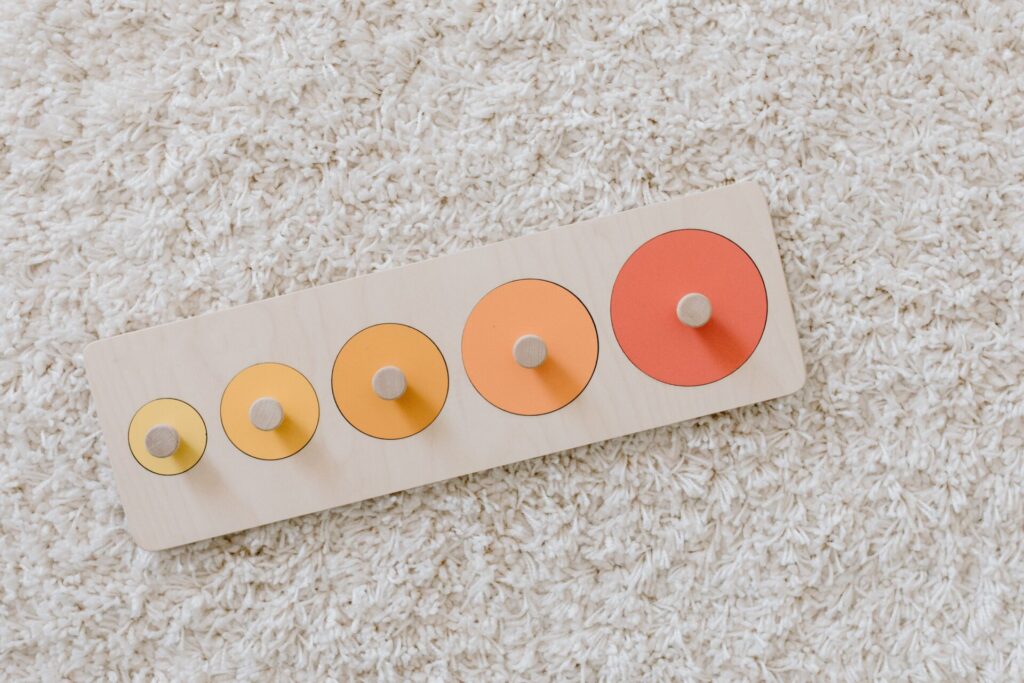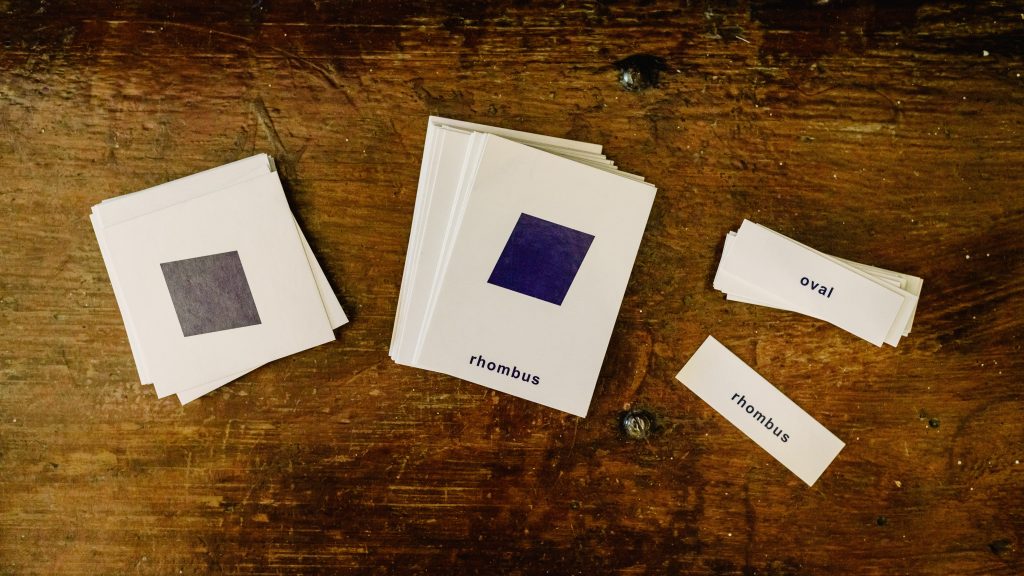The Montessori approach to education is child-centered, allowing children to learn through play and develop at their own pace. This ethos also applies to lessons that differ greatly from traditional education and is known as a 3-period lesson.
Introduction to the 3 Period Lesson in Montessori
A 3-period lesson in Montessori describes three stages designed to support active, organic learning, so children can absorb language and concepts through hands-on discovery and exploration.
Unlike traditional lessons, there is no set time frame for when each period begins or ends.
A Montessori 3 part lesson is a deliberately slow-paced process that allows the child to experience the concept, material, or vocabulary, moving onto the next step of using the language or principle when the child is ready.
At the end of the third period, the child will be confident and secure using the new skill they’ve acquired.
Let’s take a more detailed look into each of the 3 periods to understand how each period builds upon the previous as children learn, absorb and consolidate information.

First period
The first period is known as the naming period.
In this period the concept is introduced, for instance, a color or an animal in a language activity, or perhaps size and volume for a math lesson.
In this initial stage of a 3-period lesson in Montessori, teachers will often use nomenclature cards which are also known as 3-part cards.
In a language activity, both nomenclature cards and the Montessori 3-part lesson work hand-in-hand to offer exposure to new words and information organically.
However, anything a child shows an interest in can form the basis of the first period. Here are some examples:
Color
A teacher lays out color nomenclature cards and then picks up the red card, saying, ‘red’. The child is then encouraged to pick up the card, look at it, touch it and explore.
If the child is ready, they’ll be guided to match the color to the control nomenclature card and the process is repeated for the other colors.
Animal
Three animal models are laid out and the teacher picks up the horse and says, ‘horse’. The child can then pick up the horse, feel it and experience it in their own time.
The teacher repeats this process for the remaining animals and the child continues to explore the animals for themselves.
Size
Two balls are laid out, one much bigger than the other. The teacher picks up the big ball and says, ‘This ball is big’, before putting it back down.
Then they pick up the small ball and say, ‘This ball is small’ before putting it down. Each time the child is allowed to pick up the ball and experience its size for themselves.
In the naming period, the teachers use eye contact and simple language to ensure the child can absorb the information, and this period is repeated several times so the child becomes familiar with the vocabulary.

Second period
The second period is the recognition period.
A lesson only moves on to the second period when the child has heard the name or concept several times and is ready for a challenge.
This period is about integrating the information and can take as long as the child needs, whether that’s hours, days, weeks, or even months.
For example, the teacher might ask the child to pass them a particular color card several times.
When the child is confidently picking out the color cards right in front of them, the teacher might move the cards to different places in the room and ask for a particular color again.
The second period can be expanded to include lots of games, including matching nomenclature cards, even for non-verbal children.
The child can look for the color red in other places in the room, look in books for pictures of horses or compare the sizes of different objects in their environment.
When the child is comfortable with the concept, shape, color, or word it’s time for the third period.

Third period
The third period is the recall period.
A Montessori teacher will only begin the third period when the child is confident with the language or concept and the teacher knows that the child will be successful.
This period is also reserved for verbal children or younger ones who can say the words they’ve been learning because, in the third period, the teacher will ask, ‘What is this?’
If the child gets the answer wrong, teachers will not correct them, but simply affirm what the child has shown them:
I love the color blue, what is this color?
That is a cute dog, what animal is this?
You wanted to show me the small ball, which is the big ball?
When corrected repeatedly, children may lose interest and be reluctant to try again so if it turns out a child wasn’t ready for the third period after all, the teacher would make a note to reintroduce the information another time.
A 3-period lesson always ends on a positive note.
The 3-period lesson summary
The length of time each period takes varies greatly from child to child.
Some may speed through all of them in a day, others will need to spend much longer on the second period before they’re ready for the third.
With the Montessori approach, teaching always moves on at the child’s pace – and the 3-period lesson in Montessori is no exception.
Cheers and don't forget to subscribe!
